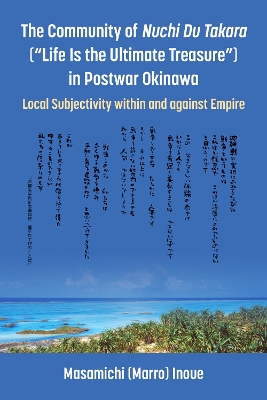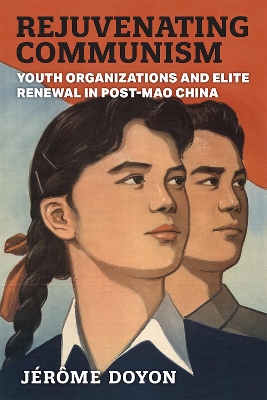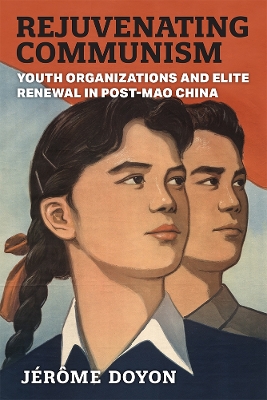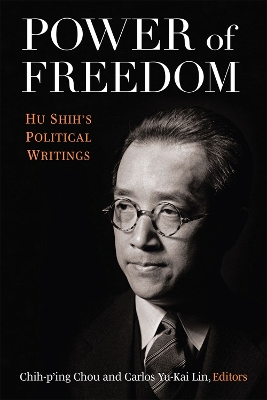Community of Nuchi Du Takara ("Life Is the Ultimate Treasure") in Postwar Okinawa
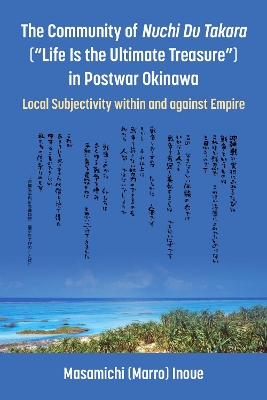 -10%
portes grátis
-10%
portes grátis
Community of Nuchi Du Takara ("Life Is the Ultimate Treasure") in Postwar Okinawa
Local Subjectivity within and against Empire
Inoue, Masamichi (Marro)
The University of Michigan Press
02/2025
456
Dura
9780472077144
15 a 20 dias
Descrição não disponível.
Introduction
Part I. Anti-base Struggles in Henoko and the Formation of the Community of Nuchi Du Takara by the Okinawan Multitude
Introduction to Part I
Chapter 1: Anti-base Struggles in Henoko, 2004-2023
Chapter 2: Protest as a Life-Form of the Okinawan Multitude: Internal Workings of the Community of Nuchi Du Takara
Conclusion to Part 1
Part II . Money and Taboo: Okinawan Subjectivity as "a Changing Same" and the Construction of the Community of Nuchi Du Takara
Introduction to Part II
Chapter 3: Ambivalence toward the U.S. Military: Formation of the Androcentric Community by the Okinawan "People" (1945-1972)
Chapter 4: Money and the Development of Okinawan Citizenship in Post-Reversion Okinawa (1970s-1990s)
Conclusion to Part II
Part III. Empire in the Asia-Pacific Region: Between American/Global and Japanese/National
Introduction to Part III
Chapter 5: American/Global/Postmodern Tendencies of Empire: Five Historical Moments of Its Formation and Transformation
Chapter 6: Dojin and Okinawa: Official Nationalism v.1, v.2, and v.3
Conclusion to Part III
Part IV. A Paradigm beyond Self and Other: The Okinawan Multitude within and against Empire in the Asia-Pacific Region
Introduction to Part IV
Chapter 7: The Mimetic Production of the Okinawan Multitude in the Planetary Time-Space Chapter 8: Conclusion: Collective Security from an Okinawan Perspective
References
Part I. Anti-base Struggles in Henoko and the Formation of the Community of Nuchi Du Takara by the Okinawan Multitude
Introduction to Part I
Chapter 1: Anti-base Struggles in Henoko, 2004-2023
Chapter 2: Protest as a Life-Form of the Okinawan Multitude: Internal Workings of the Community of Nuchi Du Takara
Conclusion to Part 1
Part II . Money and Taboo: Okinawan Subjectivity as "a Changing Same" and the Construction of the Community of Nuchi Du Takara
Introduction to Part II
Chapter 3: Ambivalence toward the U.S. Military: Formation of the Androcentric Community by the Okinawan "People" (1945-1972)
Chapter 4: Money and the Development of Okinawan Citizenship in Post-Reversion Okinawa (1970s-1990s)
Conclusion to Part II
Part III. Empire in the Asia-Pacific Region: Between American/Global and Japanese/National
Introduction to Part III
Chapter 5: American/Global/Postmodern Tendencies of Empire: Five Historical Moments of Its Formation and Transformation
Chapter 6: Dojin and Okinawa: Official Nationalism v.1, v.2, and v.3
Conclusion to Part III
Part IV. A Paradigm beyond Self and Other: The Okinawan Multitude within and against Empire in the Asia-Pacific Region
Introduction to Part IV
Chapter 7: The Mimetic Production of the Okinawan Multitude in the Planetary Time-Space Chapter 8: Conclusion: Collective Security from an Okinawan Perspective
References
Este título pertence ao(s) assunto(s) indicados(s). Para ver outros títulos clique no assunto desejado.
Okinawa; the U.S. military; community; nuchi du takara; constituent power; protest; subjectivity; the Okinawan “people”; Okinawan “citizens”; the Okinawan multitude; constituted power; US-Japan alliance; Empire; United Nations; the World Republic; collective security; collectiveregional self-defense; race; gender; class; androcentrism; war; the Battle of Okinawa; World War II; post–World War II; the Asia-Pacific region; Douglas MacArthur; John Foster Dulles; Emperor Hirohito; Yoshida Shigeru; Constitution of Japan; Article 9; nationalism; state; “history issues”; Okinawan literature; Okinawan music; Okinawan photography; Okinawan theater; the totome debate; Okinawan women; US servicemen; mixed-race Okinawans; Okinawa reversion; colonialism; postcolonialism; Emperor Akihito; Empress Michiko; ethnography; cultural studies; international relations; money; taboos; mimesis; family resemblances; Self and Other
Introduction
Part I. Anti-base Struggles in Henoko and the Formation of the Community of Nuchi Du Takara by the Okinawan Multitude
Introduction to Part I
Chapter 1: Anti-base Struggles in Henoko, 2004-2023
Chapter 2: Protest as a Life-Form of the Okinawan Multitude: Internal Workings of the Community of Nuchi Du Takara
Conclusion to Part 1
Part II . Money and Taboo: Okinawan Subjectivity as "a Changing Same" and the Construction of the Community of Nuchi Du Takara
Introduction to Part II
Chapter 3: Ambivalence toward the U.S. Military: Formation of the Androcentric Community by the Okinawan "People" (1945-1972)
Chapter 4: Money and the Development of Okinawan Citizenship in Post-Reversion Okinawa (1970s-1990s)
Conclusion to Part II
Part III. Empire in the Asia-Pacific Region: Between American/Global and Japanese/National
Introduction to Part III
Chapter 5: American/Global/Postmodern Tendencies of Empire: Five Historical Moments of Its Formation and Transformation
Chapter 6: Dojin and Okinawa: Official Nationalism v.1, v.2, and v.3
Conclusion to Part III
Part IV. A Paradigm beyond Self and Other: The Okinawan Multitude within and against Empire in the Asia-Pacific Region
Introduction to Part IV
Chapter 7: The Mimetic Production of the Okinawan Multitude in the Planetary Time-Space Chapter 8: Conclusion: Collective Security from an Okinawan Perspective
References
Part I. Anti-base Struggles in Henoko and the Formation of the Community of Nuchi Du Takara by the Okinawan Multitude
Introduction to Part I
Chapter 1: Anti-base Struggles in Henoko, 2004-2023
Chapter 2: Protest as a Life-Form of the Okinawan Multitude: Internal Workings of the Community of Nuchi Du Takara
Conclusion to Part 1
Part II . Money and Taboo: Okinawan Subjectivity as "a Changing Same" and the Construction of the Community of Nuchi Du Takara
Introduction to Part II
Chapter 3: Ambivalence toward the U.S. Military: Formation of the Androcentric Community by the Okinawan "People" (1945-1972)
Chapter 4: Money and the Development of Okinawan Citizenship in Post-Reversion Okinawa (1970s-1990s)
Conclusion to Part II
Part III. Empire in the Asia-Pacific Region: Between American/Global and Japanese/National
Introduction to Part III
Chapter 5: American/Global/Postmodern Tendencies of Empire: Five Historical Moments of Its Formation and Transformation
Chapter 6: Dojin and Okinawa: Official Nationalism v.1, v.2, and v.3
Conclusion to Part III
Part IV. A Paradigm beyond Self and Other: The Okinawan Multitude within and against Empire in the Asia-Pacific Region
Introduction to Part IV
Chapter 7: The Mimetic Production of the Okinawan Multitude in the Planetary Time-Space Chapter 8: Conclusion: Collective Security from an Okinawan Perspective
References
Este título pertence ao(s) assunto(s) indicados(s). Para ver outros títulos clique no assunto desejado.
Okinawa; the U.S. military; community; nuchi du takara; constituent power; protest; subjectivity; the Okinawan “people”; Okinawan “citizens”; the Okinawan multitude; constituted power; US-Japan alliance; Empire; United Nations; the World Republic; collective security; collectiveregional self-defense; race; gender; class; androcentrism; war; the Battle of Okinawa; World War II; post–World War II; the Asia-Pacific region; Douglas MacArthur; John Foster Dulles; Emperor Hirohito; Yoshida Shigeru; Constitution of Japan; Article 9; nationalism; state; “history issues”; Okinawan literature; Okinawan music; Okinawan photography; Okinawan theater; the totome debate; Okinawan women; US servicemen; mixed-race Okinawans; Okinawa reversion; colonialism; postcolonialism; Emperor Akihito; Empress Michiko; ethnography; cultural studies; international relations; money; taboos; mimesis; family resemblances; Self and Other

